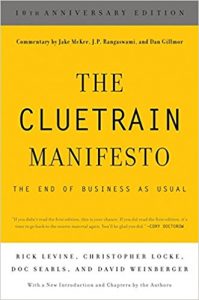Customers’ bots and agents will work on their behalf
Pardon me, Sir.
Yes, Jeeves?
The Air Bag light is now lit.
Yeah, I saw that. What’s that about?
Of the 63 things that could be wrong, the most common is a misconnection in the wiring harness. It will cost $150 for a diagnostician to determine if that’s the case. Finding the unplugged wire and securing the connection will run about $3,500 at the dealer.
What??
Yes, it’s expensive. They must remove the seats, uncover all the wiring to find the fault, and then reassemble the whole car. Your air conditioning system is also down to 72% efficiency.
Isn’t that something they can just recharge?
Yes, but you’ve done that twice already in the past three months and its failure rate is increasing.
So, what’s the total damage going to be to get this car up to snuff?
$3,500 for the airbag wiring, nearly $300 to get the air conditioning tested, and another $500 for new tires will get this car up to snuff for another month, but your failure rate is increasing.
Yeah, you said that.
I suggest that 175,000 miles over 15 years is a decent return on your investment. The time has come to consider a replacement. I’ve heard you talking with Colleen about wanting to simply replace this vehicle with the latest model and I have found three dealers in town who have the model you want. I’ve negotiated with all three and, while the silver one is $52 more, it is available and can be delivered this afternoon. The dark gray one will take a extra week, but you’ll be at Marketing Analytics World all week. Shall I have it delivered today?
Well, let me talk it over with her and…
She says, (Colleen’s voice) “You know Jeeves, I haven’t felt all that safe in that ancient car of his when we drive out to the desert and with the air conditioning going out, its time.”
She’s OK with the price?? For the one with all cool tech toys I want?
Colleen says, “If he’s going to drive the new car for 15 years, he should get the one he wants.”
Yep, that’s her all over. Ask her if she’ll marry me.
Sir, you’ve been married for 36 years.
Yes, Jeeves, but do you remember what I told you about why I ordered flowers for her when it wasn’t any special occasion?
This is another lesson about romance?
Good observation, Jeeves.
Colleen says, “Oh, you know I’d marry him again any day. Can’t wait to see his new car!”
Huh. So… when can it be delivered?
They’ll have it in your driveway at 4:30, after the dental appointment you are about to be late for.
Ending a sentence with a preposition, Jeeves?
Trying to blend in, Sir.
OK. And please handle the paperwork, will you?
Already done, Sir.
Thanks.
One is pleased to be of service.
Bicentennial Man movie reference!
Well spotted, Sir.
“Science Fiction” and “Artificial Intelligence” are a matter of perspective. My grandfather was born in 1899 and would have scoffed at the suggestion of a talking appliance named Alexa or a telephone in your pocket that could provide driving directions and make dinner reservations.
The above scenario is not intended to raise your hopes as a potential consumer, or to creep you out at the loss of control over your life and finances… but to scare the bejeepers outs of you as a marketing professional who is going to have to build AI systems that can talk to potential customers’ AI systems.
The Coming AI Ecosystem
In “Bring Your Own Intelligent Agent (BYOA) Is Coming”, Dennis Mortensen, CEO of the meeting scheduling company x.ai, described the job interview of the not-too-distant future where your potential job performance is evaluated based on the AI agents you have trained.
 Over the next half decade, as more AI intelligent agents come to market, employees will increasingly deploy a suite of agents to get their job done. Those employees who DO take advantage of these agents will become more productive and along with that more attractive (both internally and externally).
Over the next half decade, as more AI intelligent agents come to market, employees will increasingly deploy a suite of agents to get their job done. Those employees who DO take advantage of these agents will become more productive and along with that more attractive (both internally and externally).
Much like Bring Your Own Device (BYOD), this new paradigm—call it Bring Your Own Agent (BYOA)—promises a host of benefits for both employees and employers and will likely change the nature of work.
Mortensen’s fictitious Director of Events, Rebecca, uses a scheduling agent, a contract agent, and an expenses agent. She teaches them her working style, her main contacts, her budget limitations, and how to share data with other agents. Rebecca will measure their performance, tweak them when necessary, and kill off the ones that are not living up to expectations. Her ability to optimize her agents is very important to potential employers.
Now imagine your customers being surrounded by bots and agents that work on their behalf.
 Tomorrow’s customers are being trained today by Alexa, who makes buying decisions for them. They have high expectations that Amazon should be able to suggest just the right television that meets their viewing wishes, their wall, and their wallet.
Tomorrow’s customers are being trained today by Alexa, who makes buying decisions for them. They have high expectations that Amazon should be able to suggest just the right television that meets their viewing wishes, their wall, and their wallet.
If you’re Walmart, you’re unsettled that Amazon is sinking it claws deeper into your customer’s life and life-style, and you would welcome a third party that comes along, offering the ability to compete with Amazon via an AI ecosystem of agents.
What happens when the time comes to turn Customer Relationship Management (CRM) on its head?
Vendor Relationship Management
Vendor Relationship Management (VRM) is the inverse of Customer Relationship Management (CRM). VRM tools aim to give customers independence from vendors while giving them better ways of engaging with vendors.
 ProjectVRM is exploring the idea that vendors should not own data about customers, but rather that customers should own their own data. In 1999, along with his Cluetrain Manifesto co-authors, Doc Searls wrote, “We are not seats or eyeballs or end users or consumers. We are human beings and our reach exceeds your grasp. ‘Deal with it.'”
ProjectVRM is exploring the idea that vendors should not own data about customers, but rather that customers should own their own data. In 1999, along with his Cluetrain Manifesto co-authors, Doc Searls wrote, “We are not seats or eyeballs or end users or consumers. We are human beings and our reach exceeds your grasp. ‘Deal with it.'”
These days, Searls refers to intentcasting. Rather than sellers pushing their messages into the faces of people simply trying to read the news, “on the Daily Rectangle,” they will listen closely for calls-for-quotes from those in market. Make your desire known through your agent and stop seeing disruptive ads the moment your agent decides you are no longer interested. You are no longer worth the effort or expense to shower with ads.
In his book, Master Algorithm, Pedro Domingos imagines our digital selves wandering the Internet on our behalf. If I tell LinkedIn that I want a job, a million help-wanted company agents will negotiate with a million iterations of my digital self. My digital self can go on a million dates with would-be love interests to narrow the field, recommending the handful I should meet in person.
 5 Steps to Avoid Being Blindsided
5 Steps to Avoid Being Blindsided
I have confidence that my personal digital model of me will make much better movie recommendations than Netflix. I certainly trust a Samsung Family Hub Refrigerator to keep track of my groceries. Why not have it order them through Amazon for me as well?
While I’m no clothes horse, there’s every reason to expect that a personal agent could become my personal shopper as well. Being able to discern styles via photos is becoming child’s play to cloud-based image processing systems.
You don’t need to jump into this with both feet – yet. But back when your competitor built their first website, you needed one too. As soon as your competitor had a mobile app, you needed one too. When your customers stop calling, coming, or clicking, you may not even be aware that they are sourcing their soap, cars, razor blades, and groceries through an agent that negotiates on their behalf.
What to do?
1. Build a Chatbot
With tools like Chartfuel, your team can build a Facebook Messenger bot without coding. What will take time, is coming up with the questions that actual prospects and customers have been asking you. Run to your call center and start making a list. With machine learning in place, you don’t have to check it twice anymore – that’s the machine’s job. It’s time to dust off that old FAQ and give the bot enough clues about alternative ways customers ask questions that it can begin to grow an understanding.
2. Deploy Your Chatbot
Those who wish to show up on the first page of Google search results have tried to game the system. Google has invested in myriads of PHD’s to foil them. How to win? Make your webpages as relevant to humans as possible. The same will be true of AI-to-AI communication.
Machine learning and AI depend on massive amounts of data so the more questions your customers ask and the more answers you write, the better the machine will get at recognizing the former and formulating the latter.
Put that bot out there now so that when it’s time to let your agent talk to their agent, they are doing it based in experience with humans, and in a way that is decipherable after the fact. Deep Neural Networks are rather opaque. Optimizing machine-to-machine communication by filtering it through human language allows us to use hindsight to tell how an agreement was reached. Rather than measuring signals from hidden layers of nodes, we can read a transcript of the conversation.
3. Alpha Test Tomorrow
Every organization has people who want to play with the shiny, new object. Let them. We’re entering into a new era and there’s no telling where we’ll end up by next Thursday, much less five years from now. Gather you best and brightest and turn them loose in the fields of exploration, experimentation, and collaboration. Let them brainstorm, go to conferences and fail fast. They will need to be familiar with a wide variety of technologies, potential partners, and changing social norms to be ready to strike when the opportunity iron is hot.
4. Talk to Your Lawyer
Start with ethics. Seriously. The law is the lowest bar of acceptable social intercourse. Human feelings about privacy and consent are tricky at best and your organization must have its values spelled out clearly before you take another step.
Part of this process involves the study and declaration of policy in terms of baked-in bias. Does a given dataset and a permutation of algorithms unintentionally discriminate? No excuse. Your job is to see to it that it does not. Getting your company to understand the difference is the same as explaining to a child that there is a difference between “I didn’t try to,” and, “I tried not to.”
Once you have your company’s motives clarified and published, move on to social responsibility and only then, be sure to seek the council of those who have been put on earth to protect you from yourself and others: the lawyers.
Managing product and service liability in a world where terms and conditions might be negotiated by bots
is not for the faint of heart. Ethics must be honored, security must be ensured, and then, regulations must be followed.
5. Seek Professional Help
Between the data scientists pumping out new algorithms, data brokers providing fuel for the AI engines, and VC’s throwing gobs of investment into the frothy AI start-up world, there are those who can help with change management. They will become ever more important as change becomes the rule. Large organizations hate change, and yet the pace continues to quicken.
Bonus To-Do Item
When Jeeves tells you it’s time for a new car, pay attention. After all, he’s just a telephone in your pocket that can provide driving directions and make dinner reservations.



